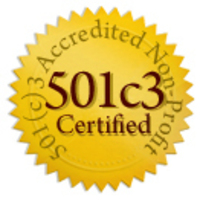Donating Excess Inventory to Charity
May 24, 2016
Getting rid of excess or obsolete inventory can provide much needed warehouse space. Some businesses may choose to donate excess inventory to charity. However, it is important to be aware of the tax regulations involved in this type of charitable giving.
A donation of inventory to a qualified organization is potentially tax deductible as a charitable contribution. The amount that is deductible is the smaller of the donated inventory’s fair market value on the day it is contributed or its basis.
The basis of contributed inventory is any cost incurred for the inventory in an earlier year the business would otherwise include in its opening inventory for the year of the contribution. The business must remove the amount of the charitable deduction from its opening inventory. It is not part of the cost of goods sold.

If the donated inventory’s cost is not included in opening inventory, the inventory’s basis is zero and the business may not claim a charitable contribution deduction. In this scenario, the business treats the inventory’s cost as it would ordinarily be treated under its method of accounting.
Under a special rule, a C corporation that donates inventory to a qualified charity that will use the donated items for the care of the ill, the needy, or infants may qualify for an enhanced (above-basis) deduction. Similarly, any trade or business that donates food inventory meeting certain standards may qualify for an enhanced deduction.
Categories: Non-Profit, Tax Compliance, Tax Planning
Nonprofit Board Member Alert
May 05, 2016
If you are a volunteer board member for a nonprofit organization, one specific issue to keep in mind is the IRS’s trust fund recovery penalty. If any entity — nonprofit or for-profit — fails to properly remit Social Security taxes and/or income taxes withheld from employees’ wages, the IRS will directly approach the organization’s “responsible persons” for the tax payments and a potential 100% penalty.
 In general, the penalty will not be imposed on any unpaid, volunteer member of the board of a tax-exempt organization if the member: (1) is solely serving in an honorary capacity, (2) does not participate in the day-to-day operations of the organization, (3) does not participate in the financial operations of the organization, and (4) does not have actual knowledge of the failure on which the penalty is based.
In general, the penalty will not be imposed on any unpaid, volunteer member of the board of a tax-exempt organization if the member: (1) is solely serving in an honorary capacity, (2) does not participate in the day-to-day operations of the organization, (3) does not participate in the financial operations of the organization, and (4) does not have actual knowledge of the failure on which the penalty is based.
However, for an active member who has governing responsibilities, it is still important to ask questions about who is handling these tax payments (a staff member, the executive director, a payroll service, an accountant?) and what checks and balances are in effect to make sure no problems arise. Annual reviews or audits may also be helpful to verify compliance.
Categories: Non-Profit
Tax Planning: Charitable Contributions
Dec 08, 2015
As we have entered the time of year for giving during this holiday season, now is a good time to consider a plan for your charitable contributions. Giving to your favorite charitable organization can also result in tax savings.
The first thing to consider is what is deductible and what is not. You can only deduct amounts given to certain qualified organizations. Generally these “qualified” nonprofit groups are religious, charitable, educational, scientific, have a literary purpose, or prevent cruelty to children or animals. You can use the IRS’ Exempt Organizations Select Check website to determine whether or not the organization you are contributing is an exempt organization that can accept tax-deductible donations. Some common examples of nondeductible contributions include civic leagues, social and sports clubs, labor unions, foreign organizations, groups whose purpose is to lobby for law changes, homeowners’ associations, gifts made to individuals, and political groups or candidates for public office. Again, check the IRS website if you are unsure whether the organization is qualified.
 The most common form of giving is cash. Cash donations include payments made in the form of cash, check, credit card, debit card or payroll deduction. For donations under $250, you will need some type of record to prove your donation. A canceled check or bank statement will do. Donors who give cash will also need written acknowledgment from the charity to claim a deduction, therefore using a check for small donations, rather than cash, may be preferable. For donations of $250 or more, you must have written acknowledgment from the organization. It’s important to note each donation is considered separately on a daily basis. For example, if you give $10 to your church every Sunday, each of those $10 contributions is considered separately, rather than an aggregate total for the year. Also, donations charged to a credit card are deductible in the year the charge is made. The rules for noncash donations are a bit more complicated, but here are some general guidelines to follow:
The most common form of giving is cash. Cash donations include payments made in the form of cash, check, credit card, debit card or payroll deduction. For donations under $250, you will need some type of record to prove your donation. A canceled check or bank statement will do. Donors who give cash will also need written acknowledgment from the charity to claim a deduction, therefore using a check for small donations, rather than cash, may be preferable. For donations of $250 or more, you must have written acknowledgment from the organization. It’s important to note each donation is considered separately on a daily basis. For example, if you give $10 to your church every Sunday, each of those $10 contributions is considered separately, rather than an aggregate total for the year. Also, donations charged to a credit card are deductible in the year the charge is made. The rules for noncash donations are a bit more complicated, but here are some general guidelines to follow:
- The amount of the deduction determines the kind of documentation you will need.
- There are different ways to value the property. Valuation guides from the Salvation Army or Goodwill Industries can be used, otherwise, the fair market value (FMV) of the item can be used.
- If the amount is less than $250, keep a record of the name of the organization, date and location, detailed description, FMV and how you determined it, and in some cases the basis if FMV must be reduced.
- Household items must be in “good” used condition or better to be deducted.
- If the amount is at least $250 but less than $500, written acknowledgment from the organization will be required
- If the amount is over $500, Form 8283 must be filed.
- There are special rules in regards to charitable contributions of cars, boats and airplanes.
The deduction for charitable contributions cannot exceed 50% of the taxpayer’s AGI. A reduced limit of 30% or 20% applies for certain contributions. The IRS’ Exempt Organizations Select Check website will depict the deduction limit percentage for many charities.
If you have any questions, please don’t hesitate to call William Vaughan Company at (419) 891-1040.
By: Mark Dietrich, Accountant
Categories: Non-Profit
Non-Profit Organizations: Taxation
Dec 03, 2015
 Every year tax-exempt, nonprofit organizations have to file a tax return. Why would they have to file if they are tax exempt? It is merely an informational tax return. This is a way for the IRS to connect with every organization to ensure they are operating appropriately, given the parameters set forth for these organizations. There are sets of circumstances which would lead a nonprofit to incur tax on income generated.
Every year tax-exempt, nonprofit organizations have to file a tax return. Why would they have to file if they are tax exempt? It is merely an informational tax return. This is a way for the IRS to connect with every organization to ensure they are operating appropriately, given the parameters set forth for these organizations. There are sets of circumstances which would lead a nonprofit to incur tax on income generated.
Unrelated business income (UBI) in excess of $1,000 triggers this tax. The IRS defines UBI as “unrelated business income from a trade or business, regularly carried on, that is not substantially related to the charitable, educational, or other purposes that are the basis of the organization’s exemption.” In the event that a nonprofit has this type of income, an additional form beyond the regular Form 990 will need to be completed, a 990-T return. This return acts much like a for-profit entity’s tax return and income tax is assessed on the net profit. Also, a nonprofit organization can carry forward any back losses associated with UBI, similar to a for-profit entity. The rule of thumb here is to ensure your operations and business dealings are related to your charitable purpose, thus you will avoid the tax and additional filings associated.
Courtney Elgin, CPA
Categories: Non-Profit
Relief for Small Non-Profit Organizations Seeking 501(c)(3) Status
Jun 16, 2015
Our firm has recently received a number of questions from non-profit organizations asking about the simpler method that the IRS now offers to apply for 501(c)(3) tax-exempt status. The fact is that there is now a streamlined Form 1023-EZ that can be used to apply for 501(c)(3) status, however, it doesn’t apply to all organizations.
Before July 1, 2014, the only way to apply for 501(c)(3) tax-exempt status was to complete Form 1023, which can be up to 26 pages long, depending on which schedules are applicable to the organization. Since July 1, 2014, there is an alternate 3 page online Form 1023-EZ application available to small nonprofit organizations meeting certain criteria. This new electronic application should help speed up the time it takes the IRS to process and approve the tax-exempt  status requests.
status requests.
The instructions for Form 1023-EZ include an eligibility questionnaire comprised of 26 yes or no questions. If the organization answers “yes” to any of the questions, the organization is not eligible to file the Form 1023-EZ. Some of the main factors which may disqualify organizations are
- if the organization projects annual gross receipts will exceed $50,000 in any of the next three years,
- the organization has had gross receipts exceeding $50,000 in any of the past three years, or3) the organization has total assets in excess of $250,000. Organizations that do not qualify to file Form 1023-EZ would use Form 1023.
- the organization has total assets in excess of $250,000. Organizations that do not qualify to file Form 1023-EZ would use Form 1023.
Organizations that do not qualify to file Form 1023-EZ would use Form 1023. If an organization qualifies to file the Form 1023-EZ, it must complete the form on www.pay.gov. The organization must have an Employer Identification Number and be a corporation, an unincorporated association or a trust. It also requires organizing documents (such as Articles of Incorporation, if a corporation) with a specific language required. A $400 fee is also required to be paid by the organization when filing the 1023-EZ that must be paid by a credit or debit card or automatic debit from a bank account.
More details regarding Form 1023-EZ can be found in Rev. Proc. 2014-40 or on the instructions for the Form 1023-EZ. Please also feel free to call our office at 419-891-1040 with any questions.
By: Brent Ringenberg, CPA
Categories: Non-Profit
